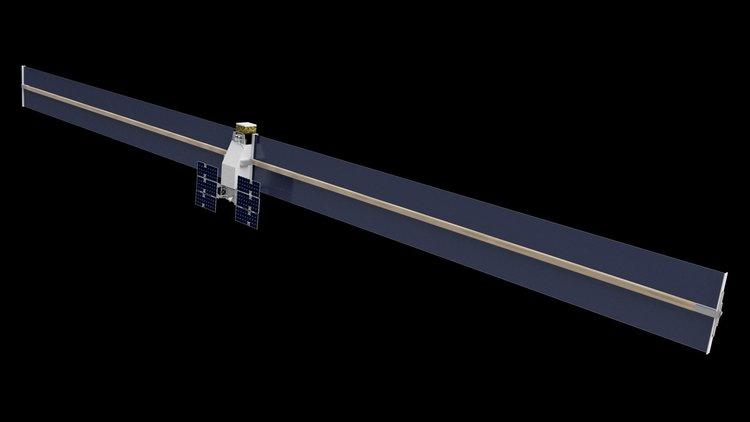- FMA
- The Fabricator
- FABTECH
- Canadian Metalworking
Our Publications
Categories
- Additive Manufacturing
- Aluminum Welding
- Arc Welding
- Assembly and Joining
- Automation and Robotics
- Bending and Forming
- Consumables
- Cutting and Weld Prep
- Electric Vehicles
- En Español
- Finishing
- Hydroforming
- Laser Cutting
- Laser Welding
- Machining
- Manufacturing Software
- Materials Handling
- Metals/Materials
- Oxyfuel Cutting
- Plasma Cutting
- Power Tools
- Punching and Other Holemaking
- Roll Forming
- Safety
- Sawing
- Shearing
- Shop Management
- Testing and Measuring
- Tube and Pipe Fabrication
- Tube and Pipe Production
- Waterjet Cutting
Industry Directory
Webcasts
Podcasts
FAB 40
Advertise
Subscribe
Account Login
Search
NASA funds demo of 3D-printed spacecraft parts made, assembled in orbit
- July 23, 2019
- News Release
- Additive Manufacturing
NASA has awarded a $73.7 million contract to Made In Space Inc., Mountain View, Calif., to demonstrate the ability of a small spacecraft, called Archinaut One, to manufacture and assemble spacecraft components in low-Earth orbit. The in-space robotic manufacturing and assembly technologies could be important for America’s Moon to Mars exploration efforts, according to NASA.
The objective is to construct two 10-meter solar arrays, in orbit, to power an ESPA-class satellite. Once in orbit, Archinaut One will employ its extended-structure-additive-manufacturing capabilities and advanced robotics to manufacture and assemble the satellite’s power system. The Archinaut-created solar arrays will yield nearly five times the power currently available to ESPA-class satellites.
“The Archinaut One mission is a critical proof point to validate the use of robotic manufacturing and assembly for space exploration and commercialization activities,” said Michael Snyder, Made In Space’s chief engineer. “These technologies allow us to circumvent the design constraints imposed by the launch environment and create space-optimized structures and assemblies, thereby demonstrating unprecedented capabilities.”
The contract is the start of the second phase of a partnership established through NASA’s Tipping Point solicitation. The public-private partnership combines NASA resources with an industry contribution of at least 25 percent of the program costs, shepherding the development of critical space technologies while also saving the agency money.
Archinaut One is expected to launch on a Rocket Lab Electron rocket from New Zealand no earlier than 2022. Once it’s positioned in low-Earth orbit, the spacecraft will 3D-print two beams that extend 32 ft. out from each side of the spacecraft. As manufacturing progresses, each beam will unfurl two solar arrays.
“In-space robotic manufacturing and assembly are unquestionable game-changers and fundamental capabilities for future space exploration,” said Jim Reuter, associate administrator of NASA’s Space Technology Mission Directorate. “By taking the lead in the development of this transformative technology, the U.S. will maintain its leadership in space exploration as we push forward with astronauts to the moon and then on to Mars.”
These technologies have the potential to:
- Enable remote, in-space construction of communications antennae, large-scale space telescopes, and other complex structures.
- Enable small satellites to deploy large-surface-area power systems and reflectors that currently are reserved for larger satellites.
- Eliminate spacecraft volume limits imposed by rockets.
- Avoid the inherent risk of spacewalks by performing some tasks currently completed by astronauts.
Made In Space began working on Archinaut as a ground demonstration in 2016 and, just a year later, successfully 3D-printed structural beams in a NASA facility that mimics the conditions of space. In a thermal vacuum chamber at the agency’s Ames Research Center in California’s Silicon Valley, the company proved the printing equipment and printed hardware can withstand the pressure, temperature, and other rigors of space.
The Archinaut team includes Made In Space; Northrop Grumman of Falls Church, Va.; Ames; and NASA’s Jet Propulsion Laboratory in Pasadena, Calif.
- Podcasting
- Podcast:
- The Fabricator Podcast
- Published:
- 04/16/2024
- Running Time:
- 63:29
In this episode of The Fabricator Podcast, Caleb Chamberlain, co-founder and CEO of OSH Cut, discusses his company’s...
- Trending Articles
- Industry Events
16th Annual Safety Conference
- April 30 - May 1, 2024
- Elgin,
Pipe and Tube Conference
- May 21 - 22, 2024
- Omaha, NE
World-Class Roll Forming Workshop
- June 5 - 6, 2024
- Louisville, KY
Advanced Laser Application Workshop
- June 25 - 27, 2024
- Novi, MI

























